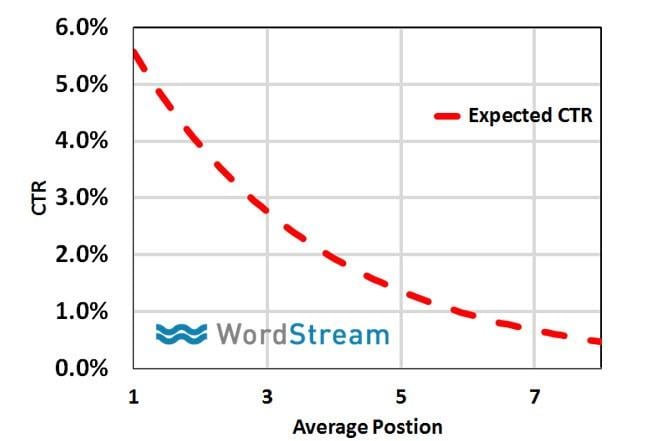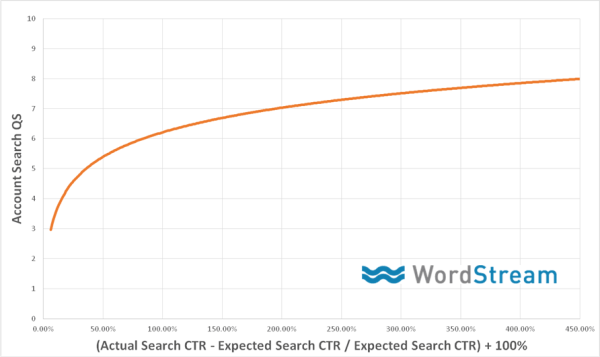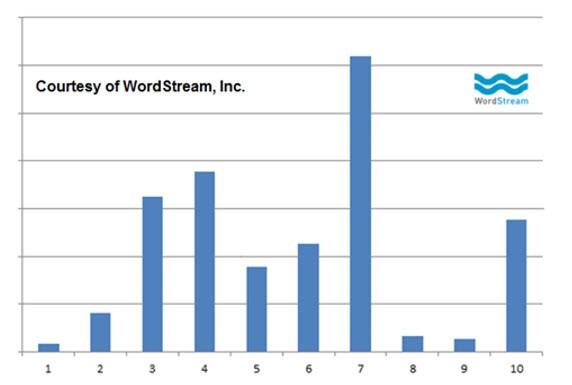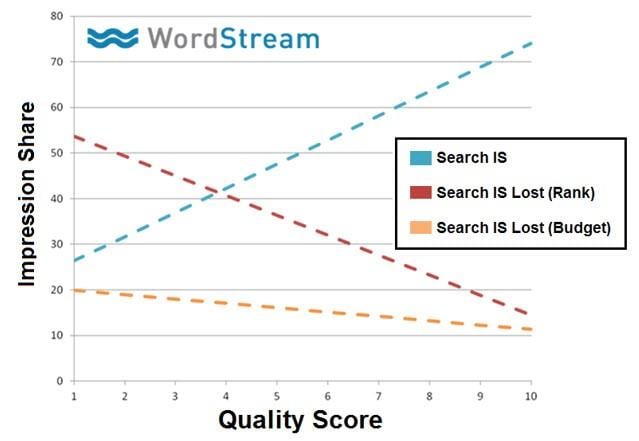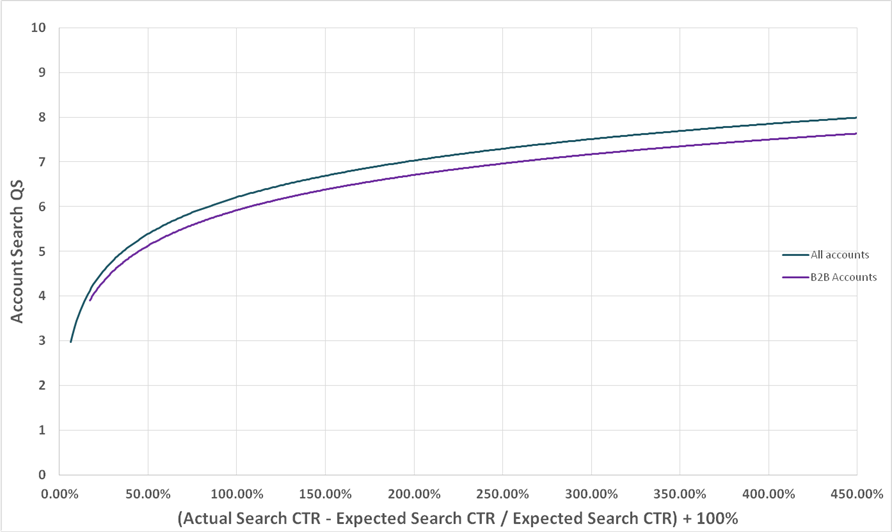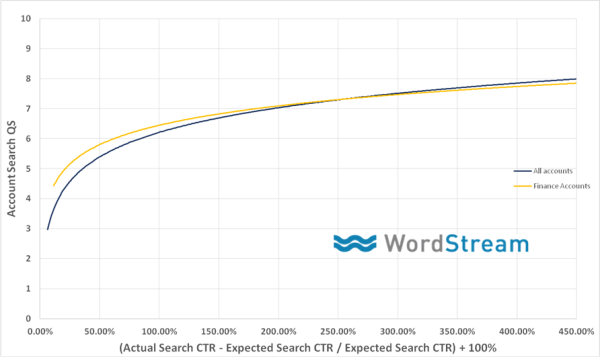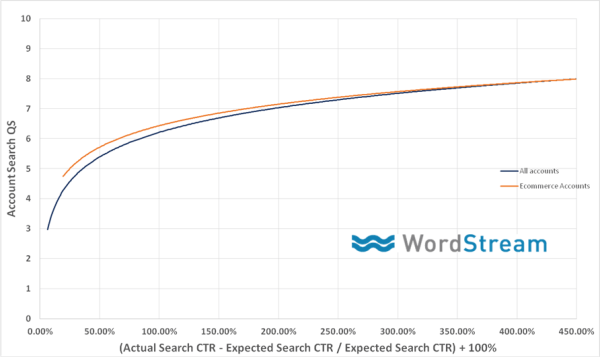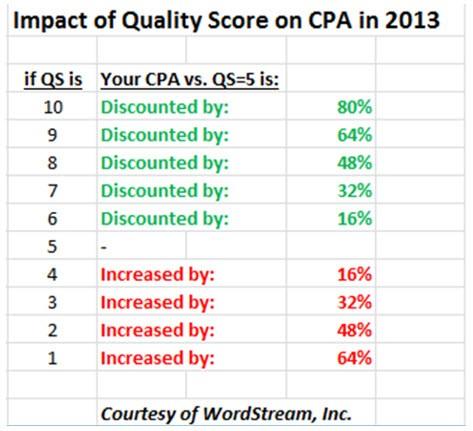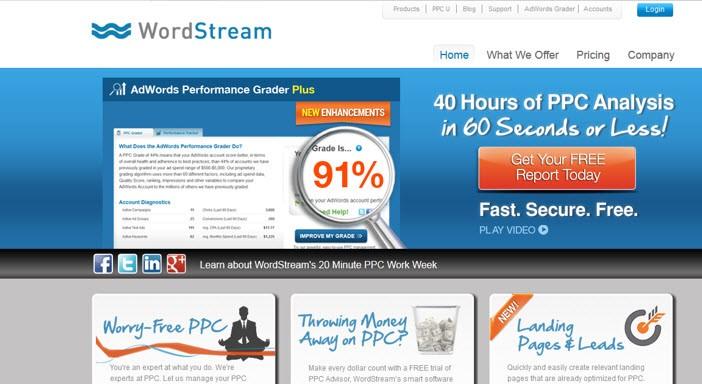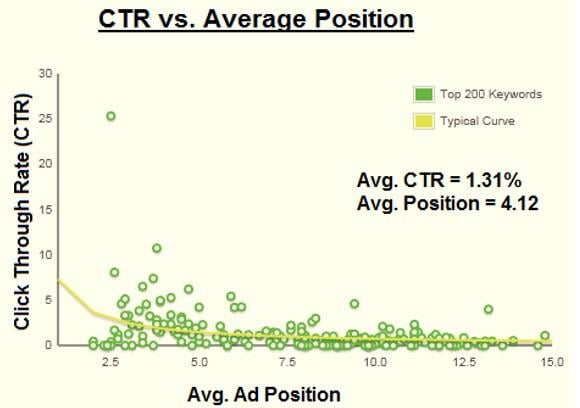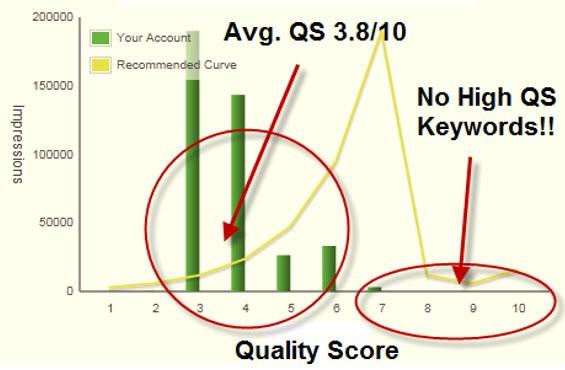
Paid search is one of the most effective means for businesses to gain new customers. However, the PPC playing field has changed dramatically in recent years, and strategies that might have been effective in the past simply no longer cut it.
In this post, I’m going to show you why you should stop wasting time with low click-through rate PPC strategies or bidding to a particular position, and what you can do to improve the ROI of your paid search campaigns.
What is a ‘Low CTR Strategy’?
Before we go any further, I’ll explain what I mean by “low CTR strategies.”
There are two main types of low CTR paid search strategies. The first is the type of campaign in which you target broader keywords within your market. These keywords include both informational and navigational queries, as well as those with ambiguous intent. All three of these keyword types have stubbornly low click-through rates.
The second category of low CTR strategy is when you actively pursue lower ad positions in the hopes of increasing your conversion rates, or attempt to discourage unqualified prospects from clicking on your ads by altering the copy of your ads.
Not so long ago, you might have been able to get away with pursuing either of these strategies. However, times have changed, and adopting these tactics today will not yield the results you’re hoping for. Why?
Google Expects More From Your Ads
Long gone are the days when poor-quality ads could pass muster. Today, Google expects much more from your ads than it ever has before.
As you can see in the figure above, Google’s expectations in terms of expected CTR versus average ad position are fierce, and unfortunately, many ads simply don’t make the grade. To make matters worse, Google’s expectations keep trending higher, which means the ad quality bar is being raised consistently – but why should you care?
Quality Score is Based on Beating Expected CTR
As I pointed out in a recent post on the WordStream blog, Quality Score is arguably the most important PPC metric, as a high Quality Score results in better Ad Rank, which in turn directly impacts CPC, Ad Position and Impression Share. At WordStream, we have conducted extensive research into the Quality Score equation, and we learned that the Quality Score algorithm is essentially just a matter of exceeding the expected CTR.
Based on our internal research, we have discovered that Google has quietly made several major changes to how the ad auction works during the past few years, and that Quality Score is more important than ever before.
- Today, the average AdWords Quality Score is 5/10
- Four years ago, it was 7/10
This indicates that Google has indeed raised the bar for advertisers, and that it’s harder for the same ads to achieve the kind of Quality Scores today as they did in the past.
As average Quality Scores fall, the value of having an above average Quality Score in terms of the discount on cost-per-click is worth 200% more than it used to be. In the figure above, you can see how Quality Score can increase – or decrease – CPC. When you look at it in these terms, Quality Score begins to become much more important.
Low CTR Strategies Result in Severe Financial Penalties
One of the main reasons why low CTR paid search strategies were so popular in the past is because some advertisers really didn’t want high click-through rates. The logic behind this was that the higher the CTR, the more money the advertiser had to pay. While this might appear to stand to reason at face value, this isn’t actually the case.
Yes, by pursuing a low CTR, you’ll pay for fewer clicks. However, as the table above indicates, advertisers adopting this kind of strategy will actually end up paying up to 400% more for those fewer clicks because of the “tax” on ads with low Quality Scores.
Low CTR Strategies Result in Lower Impression Share
Another huge problem with low CTR strategies is that Google has also become more selective in which ads are displayed on the SERPs.
The frequency with which Google displays your ads is known as impression share. The lower your impression share, the less likely your ads are to be shown to prospective customers who conduct searches using your keywords. This, obviously, is very bad for advertisers.
We have identified a close correlation between Quality Scores and impression share. The key takeaway of this is that for every one-point increase or decrease in Quality Score, you can expect to gain or lose an average of 9% impression share, as illustrated in the figure below:
High Quality Scores Are Possible in EVERY Industry
One of the arguments I hear time and again from advertisers with poor Quality Scores is that it simply isn’t possible to achieve high Quality Scores in their sector (as if Google somehow has it in for them). Unfortunately for them, this just isn’t true.
Remember how we established that Quality Scores are determined by exceeding the expected CTR? Well, by definition, it stands to reason that half of advertisers have poor Quality Scores, while the other half have above average Quality Scores, right?
To disprove the “impossible Quality Score” defense, I set out to examine average Quality Scores by industry. Guess what? I found that there are both high and low Quality Scores in every industry.
B2B Industry Quality Scores
In the following figure, I plotted the Quality Scores of B2B companies against overall QS data (the purple dots are the B2B companies). As you can see, there isn’t a whole lot of variance between the Quality Scores of B2B companies and other types of advertisers – there are both highs and lows across the board.
Finance Industry Quality Scores
Although it’s accurate to say that the financial sector has the highest average cost-per-click in paid search, what about Quality Scores? In the figure below, you’ll see that Google doesn’t have it in for the wolves of Wall Street after all (finance industry advertisers marked in yellow):
E-Commerce Industry Quality Scores
What about e-commerce, though? Surely the sheer number of e-commerce paid search advertisers makes it impossible to achieve high Quality Scores? Nope, sorry. See below for the distribution (e-commerce companies in orange) – highs and lows across the board:
Why Quality Score Matters
Just as some advertisers claim that achieving high Quality Scores is impossible in their industry, others say that they simply don’t care about their CPC. This assertion, however, makes a little more sense. After all, if you’re managing to turn a profit on keywords with a CPC of $100, why would you care about lowering it?
The reason that advertisers like this should care, however, is because there is a strong relationship between CPC and cost per conversion. The higher the cost-per-click, the higher the cost-per-conversion. We ran the numbers of hundreds on millions of dollars of ad spend, and found that the higher the CPC, the higher the CPA. If you’re running profitable campaigns with high CPCs, they could be even more profitable if you could lower your CPCs by raising click-through rates and Quality Scores.
There Is No Relationship Between Average Search Position and Conversion Rate
Over the years, I’ve had many advertisers tell me that they don’t want high click-through rates, or that ads in position three convert better for them. Unfortunately, this theory doesn’t pan out, either.
We examined conversion rates of ads in several different positions (from top down to three) across thousands of AdWords accounts, and found that on average, there was no relationship between conversion rate and average search position. This means that there is nothing magical about conversion rates of ads in position three or anywhere else. You don’t even have to take my word for it – even Google has published data that debunks this theory.
Sorry guys.
When High CTR Equals High CPA
@larrykim an example: Notice CTR for “Free” ads is better and higher avg pos, but CPA is prohibitive even w/ low CPC pic.twitter.com/WmqJ4Maocu
— Sam Owen (@SamOwenPPC) March 21, 2014
Recently, a friend of mine and fellow paid search expert Sam Owen brought an anomaly to my attention. In short, Sam pointed out that in the example above, the ads labeled “free” has the highest CTR (1.1%), but the CPA was $143.75!
It seems to me that the problem here is either a keyword targeting issue or a landing page problem. Maybe “free” is a keyword that Sam shouldn’t be going after. Even though you should be trying to run a high CTR campaign, that doesn’t mean you should target keywords that don’t make sense for your business.
It could also be a problem of user behavior. The “free” keyword might be resonating with prospects, which means they’re clicking, but they’re not converting. If this seems more likely in your situation, try radically changing the offer (like actually offering something of value for free) to see if this has an impact on your CPA.
Let me show you an example of this, and how I handled it.
Average Conversion Rates
We analyzed conversion rates across thousands of accounts and found that the top 10% of advertisers across all industries have conversion rates that are between three and five times higher than the average advertiser. These guys are absolutely killing it.
However, we also found that the reason these accounts have incredible conversion rates had nothing to do with ad position and everything to do with their landing pages (their offers, guarantees, unique selling proposition etc.), as well as their keyword selection.
(The above conversion rate data comes from our customers’ accounts and is based on a variety of sources including AdWords and Bing.)
Capturing Landing Page Unicorns (+3x Ave. Conversion Rate!)
What are landing page unicorns? Well, like their mythological namesakes, they are those rare and beautiful landing pages that have conversion rates three times (or more) higher than their run-of-the-mill counterparts. Here’s how I created a unicorn of my own.
Change the Offer
For many years, I struggled with high click-through rates on my “free PPC software” ads, which pushed a free trial of WordStream’s PPC software. Unfortunately, this resulted in low conversion rates and a high CPA, neither of which were viable for my business.
One day, it occurred to me that maybe people just weren’t into the offer and that the solution wasn’t to reduce my CTR, but improve the conversion rate by radically changing the offer.
New Offer
I changed the offer to an AdWords report card. It benchmarks the performance of your AdWords account against your competitors. This new offer converts four times better than the old offer!
The moral of the story is that if you’re seeing high click-through rates and low conversion rates, it’s possible this could be a result of some other problem – like a poor offer.
Low CTR/Quality Score Keywords are Killing Your Account
If you’re still not convinced, I’ve saved the best for last. The most compelling reason to drop the low CTR or Quality Score keywords from your campaigns is that they’re literally killing your account. Let’s see this in action:
As you can see, there are some keywords that are doing very well and exceeding the expected CTR, and that there are a lot more keywords that are falling short of the expected CTR. So you’d expect to see a mix of both high and low Quality Score keywords, right?
Unfortunately, that isn’t the case. Notice how all of the account’s keywords have Quality Scores between 3 and 6? This means that the low CTR/Quality Score keywords are having a negative impact on the overall campaign and account Quality Scores and CTR. This, in turn, reduces the Quality Scores of all of the keywords in your account, even the good ones.
Some Closing Thoughts
Before I wrap this up, I wanted to point out that the data presented here are based on averages. If you’re only managing a single AdWords account, it’s possible you’ll see different patterns. When you look at hundreds of thousands of accounts, though, the strategies I’ve outlined here will hold water.
Hopefully, I’ve managed to convince you to “just say no” to low CTR strategies and instead cast a narrower net to get your CTR as high as possible. Delete the low CTR keywords that are killing your account, and consider using remarketing and RLSA to scale your paid search efforts.
Data Sources
Data in this article, where not disclosed above, is based on a sample size of 240 accounts (WordStream managed services clients) representing US-based SMBs in all verticals. The graphs incorporate data from the Google Search Network between Jan 2012 and July 2014.

